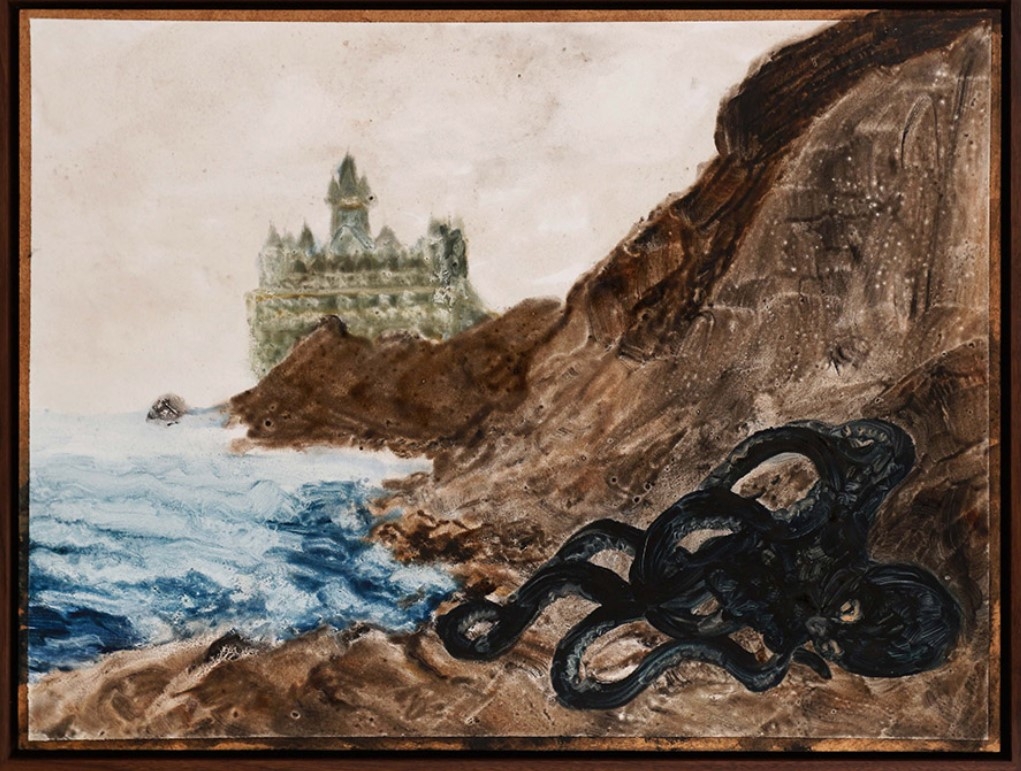Inspiration is drawn from collected images – sourced from her surroundings, memories of dreams, snaps from social media – that she selects intuitively and keeps a vague recollection of. As such, the conscious and the subconscious are active participants, in what becomes a personal type of symbolism.
Elfhag coined the term emotional cannibalism as an ongoing theme throughout her oeuvre: painting as a manner of processing and even transforming past, personal events. She believes that one carries, avertedly or not, several images with symbolic values. Addressing these is an attempt to understand how external and internal images collide, in terms of both vision and perspective.
However, Elfhag is not interested in finding the truth and is fully comfortable with her works never revealing themselves entirely. If anything, this is an inherent part of her process, as she does not want to control the shapes or final images, but rather lets them emerge and build their own storyline.
Having developed a recognizable painterly style, Elfhag also pays particular attention to the composition. However, an evolution in how works are constructed is noticeable in the recent body. In the past, multiple layers of paint were employed to create various storylines. Present paintings show a more determined brushstroke – the narrative is now achieved through gestural movements, and fewer, more translucent layers. This is particularly evident in the smaller-sized works, in which the artist seems to offer a close-up, a window, into one ephemeral moment on which she focuses our attention. While narratives remain open and imbibed with symbolic language, a sense of temporality and enhanced intimacy between the viewer and each artwork emerges.
Siri Elfhag, born 1988, lives and works in Stockholm. Elfhag is primarily a painter, but her works also contain drawing, music, performance, text. She graduated from the Academy of Fine Arts in Umeå in 2019 and received the Umeå Municipality Art Grant the same year. In 2020, Siri Elfhag was the recipient of the prestigious Fredrik Roos Grant, the subsequent ceremony and exhibition being held at Artipelag Museum the same year.




